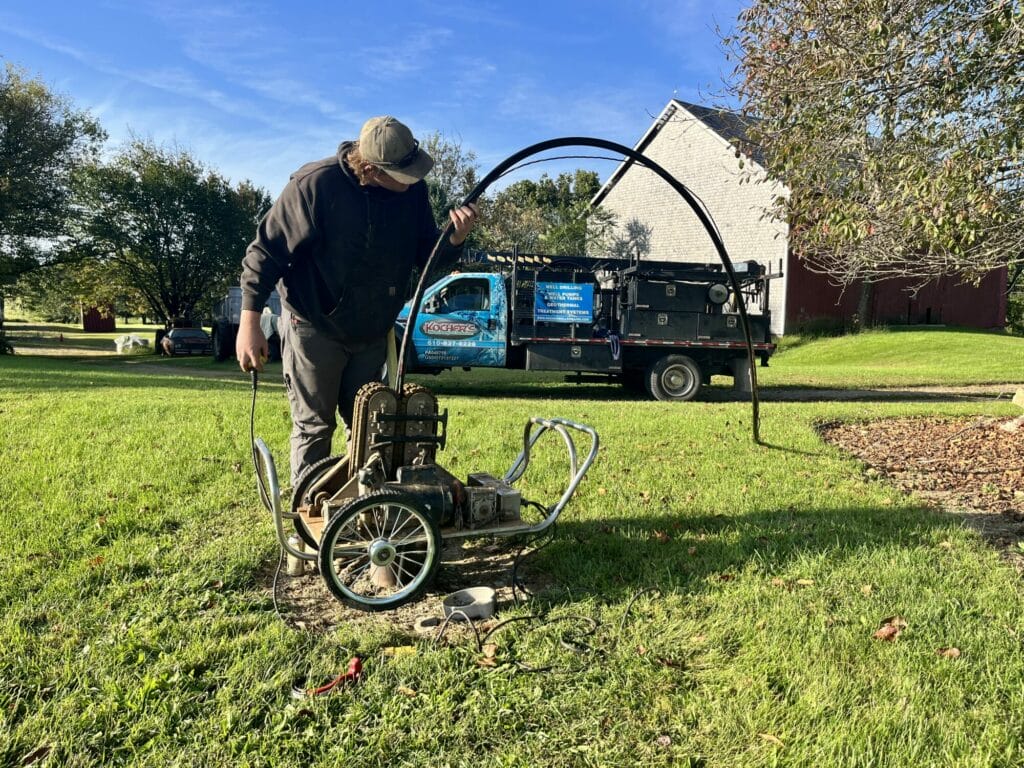The Vital Role of Water Testing in Drinking Wells
In the context of drinking wells, water testing is not just a recommendation—it’s a necessity. These tests are critical for determining if the water is fit for consumption. Regularly testing water from drinking wells helps identify potential contaminants that could be harmful to health. This proactive approach is key to maintaining the safety and longevity of drinking wells.
Why Water Testing Matters:
- Health Protection: Identifying harmful elements like total coliform bacteria, nitrates, and VOCs that could cause illness.
- Quality Assurance: Guaranteeing that the water is pleasant to use.
- Safeguarding the Well: Early detection of issues can extend the well’s life.
Common Contaminants Found in Drinking Wells
Understanding what might be lurking in your well water is crucial. The range of potential contaminants varies widely, encompassing both naturally occurring elements and man-made pollutants.
Typical Water Contaminants:
- Biological Hazards: Such as bacteria, viruses, and parasites.
- Chemical Pollutants: Including pesticides and industrial runoff.
- Heavy Metals: Like lead and arsenic, often found in natural deposits.
- Radioactive Substances: Occurring naturally in some geological formations.
Effective Water Testing Techniques for Drinking Wells
Different methods are employed for testing water based on the types of contaminants that are suspected. Homeowners should consider enlisting professional services for thorough testing.
Water Testing Options:
- Home Testing Kits: Useful for basic, immediate testing.
- Lab Analysis: Provides a comprehensive examination of various contaminants.
- Ongoing Professional Evaluation: To ensure continual safety and meet local health standards, testing should be done annually for total coliform bacteria, nitrates, total dissolved solids, and pH levels, as recommended by the CDC.
Addressing Contamination Issues in Drinking Wells
Identifying contaminants is just the first step. It’s equally important to treat and manage these issues effectively to ensure the safety of the well water.
Remediation Techniques:
- Installation of Filtration Systems: Targeted to remove specific contaminants.
- Applying Water Treatment Methods, Such as chemical or UV treatments.
- Routine Well Maintenance: To prevent the recurrence of contamination.
Key Takeaways for Maintaining Safe and Clean Water in Drinking Wells
The importance of regular testing and maintenance for drinking wells cannot be overstated. By understanding the potential contaminants and utilizing effective testing and treatment methods, homeowners can ensure a continuous supply of clean, safe water. Being informed and proactive is essential in managing and safeguarding your drinking health.
Water is an invaluable resource, and its cleanliness directly impacts our health and well-being. Regular water testing, in line with CDC guidelines, is a fundamental practice for maintaining the quality and safety of your drinking well’s water.




